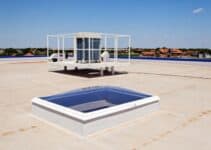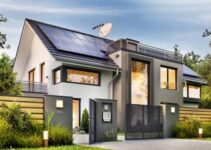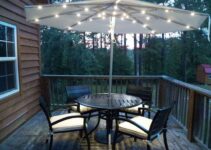You recycle regularly. You use the most energy-efficient light bulbs you can find. You even have a compost station in your backyard. Still, you want to do even more to make your home or office environmentally friendly. What better way to reduce your household’s gas emissions than to switch from relying on fossil fuels to utilizing the power of solar energy?
The problem a lot of people have when they decide to go solar is they don’t know where to start. Though solar energy systems aren’t a new concept, they’ve only recently become a trending topic in the media, as innovations such as solar-powered airplanes have just taken off – literally. If harnessing sun power is a route you’d eventually like to take — whether at your home or at your work building — here’s what you need to know about solar energy systems, both active and passive.
How Does Solar Energy Work?
Rooftop solar paneling is becoming more and more popular – in fact, in 2015, the Solar Energy Industries Association (SEIA) reported that a record-breaking 66,440 solar systems were installed in homes during the first quarter of the year. How do these solar panels convert sunlight into electricity to heat your home or power your appliances?
Basically, each panel is made up of solar cells, which consist of silicon semiconductor wafers that, when struck by the sunlight’s rays, result in a so-called photovoltaic (PV) effect that directly converts the sun’s photons into electricity. If you’re worried about how this process works at night, after the sun has disappeared, don’t panic – the solar panels store the extra energy captured during the day to draw from it even when it’s nighttime or a cloudy day.
Investing in solar panels can reduce your greenhouse emissions immensely by providing a source of clean and renewable energy, leading to a less-polluted environment. Just 18 days of sunshine are equivalent to the Earth’s overall supply of coal, gas and oil. Convinced enough to make the transition to a more sustainable lifestyle? Now it’s time to decide whether to go with an active or a passive solar energy system.
What Are Active and Passive Solar Systems?
Both active and passive solar energy systems can convert the sun’s rays into direct electricity, but their mechanisms are a bit different from each other, so it’s useful to know the facts before you decide which kind to go with. So how exactly does each system function, and what does it mean for you?
Active solar systems: Active solar power setups rely on external energy sources – or backup systems, such as radiators and heat pumps — to capture, store and then convert solar energy into electricity. Depending on the complexity of the design, it can heat or cool your home or provide power to an entire neighborhood. Active solar systems include the following features:
- The collectors are made up of flat-plate PV panels, which are usually mounted and stationary. In advanced designs, panels are often connected with each other to form modules.
- The solar collectors use liquid or air as conductors to store and convert energy. Those that use liquid are known as hydronic collectors, while those that contain air are called air collectors.
- Liquid conductors are more common than those that are air-based, as liquid is generally more efficient at conducting heat, though air-based solar systems have the benefit of not freezing.
Passive solar systems: In contrast to active solar systems, passive systems operate without the reliance on external devices. Rather, such as in greenhouses, solariums and sunrooms, solar energy captures sunbeams through glass windows that absorb and retain heat. Passive solar systems include these features:
- Instead of using PV panels, passive collectors usually rely on south-facing windows to convert rays into sunlight.
- Design of passive solar collectors is based on the law of thermodynamics, which posits that heat transfers from warm to cool surfaces, such as through convection.
- The success of the passive solar system depends on its orientation and the thermal mass of its walls, which determine its ability to absorb heat.
Which Solar Energy System Is Best for Me?
Before you start the debate of whether to switch to active systems versus passive solar systems, first you should ask yourself: Are you sure you’re ready for the change to solar energy? Though you’ll be contributing to a more sustainable environment, you should always weigh the pros and cons before making such a momentous decision.
For example, remember that solar systems, though a green and renewable source of energy, still aren’t the most efficient if your home or business requires a lot of power. With solar panels installed on your rooftop, only 14 percent of the sunlight captured can generate viable electricity. Plus, consider your location. Sure, solar systems can draw from stored energy, but just how much? If you live in an area with consistently cloudy or rainy weather, now may not be the right time to transform your building into a greenhouse.
Still ready to take the leap in your humanitarian efforts to preserve the planet? Consider the advantages and disadvantages of both active and passive solar systems.
Active solar systems: First, let’s look at the pros of switching to an active solar system:
- Since it still utilizes the power of your external devices, you don’t have to worry about deriving power from sources other than the sun.
- It releases no carbon dioxide into the atmosphere.
- Heating of the PV panels helps keep them clean, especially in poor weather conditions.
- There is usually no wind noise generated from the solar panels.
An active solar system has its disadvantages, too:
- It usually requires expensive external equipment.
- Maintenance of equipment can also be costly.
- The fluids that most efficiently store heat have the potential to release toxic chemicals into the air.
Passive solar systems: Investing in a passive solar system can be a good idea if you’re looking to fuel a small residence or office building, but it’s still important to weigh the positives and negatives. Here are some of the positives:
- It requires no external equipment, so it’s usually cheaper than an active system.
- It can further reduce costs by bringing your energy expenditures down by around 14 percent.
- It’s better than an active system for your health, since it doesn’t rely on radiators or furnaces that dry out your mucous membranes or cause allergies.
Now, consider the negatives:
- Its efficiency depends on the weather.
- If you live in a particularly warm climate, it has the potential to overheat your buildings.
- It requires a careful, proper choice in windows for maximum success.
Generally, sustainability experts say passive solar energy systems are the best choice, unless your goal is to fuel a massive building or a large campus. Whichever decision you make, make sure it’s calculated and well researched. If you decide now isn’t the time to transition to solar energy, remember that no one’s judging you. There are plenty of other ways to go green in the meantime. Keep at that compost pile and you’re still ahead of most people.






